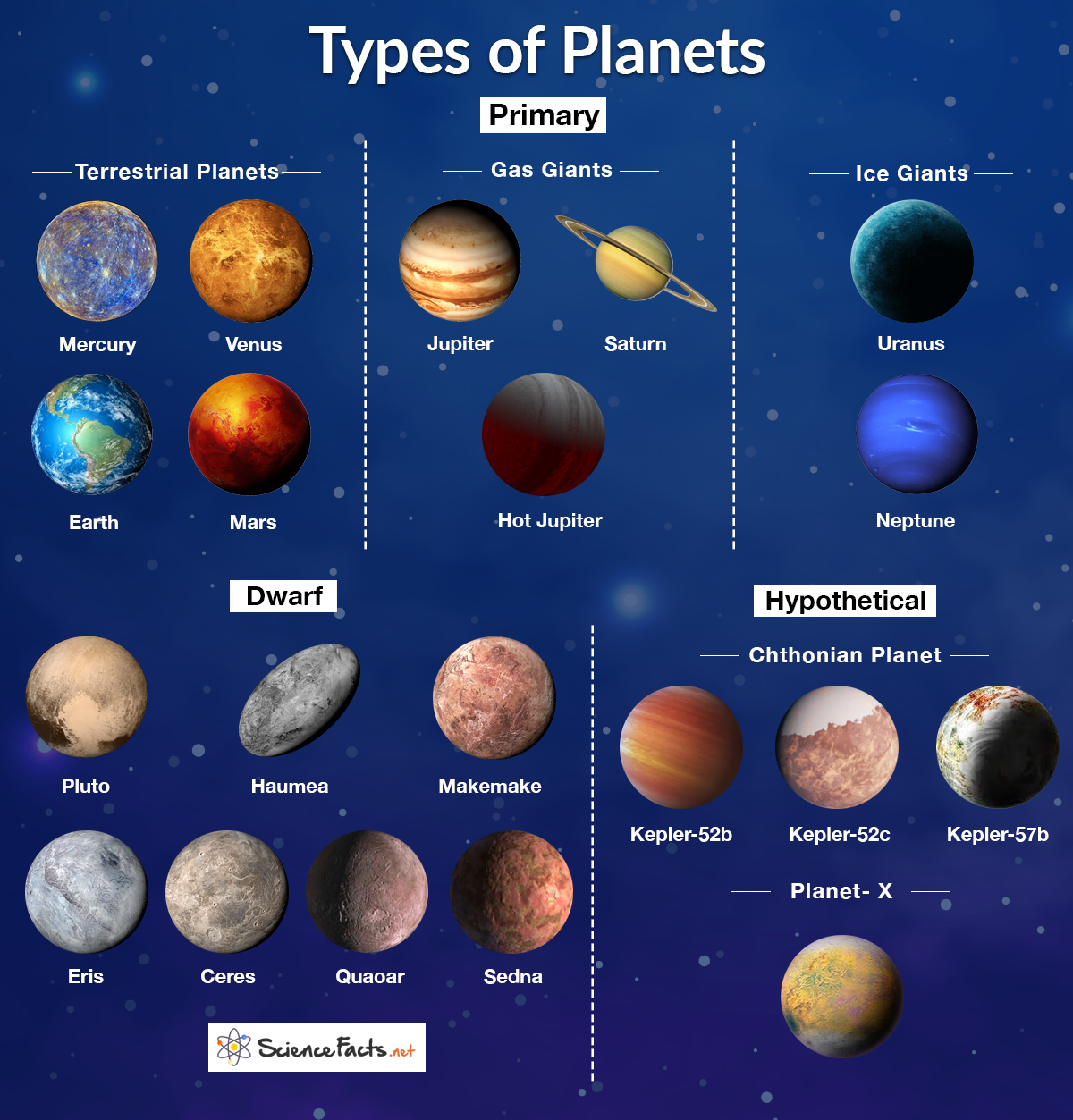What Are the Different Types of Planets
1. Primary Planets
2. Dwarf Planets
3. Hypothetical Planets
Primary planets are further classified into terrestrial, gas giants, and ice giants.
a) Terrestrial planets
These planets are also referred to as ‘telluric planets’ or ‘rocky planets’ as they are composed of rocks and metals. They consist of a metallic core, primarily iron with a rocky crust. Craters, canyons, volcanoes, and mountains can also be found on these planets. The word ‘terrestrial’ comes from the Latin word ‘terra’, referring to ‘land’. Examples: Mercury, Venus, Earth, and Mars; Kepler-10b, a terrestrial exoplanet orbiting Kepler-10
b) Gas Giants
These giant planets are composed of gases, primarily hydrogen and helium, with a small rocky core. According to researchers, the gas giants formed as rocky and icy planets similar to the terrestrial planets. However, their bigger cores allowed them to extract hydrogen and helium out of the gaseous nebula from which the sun formed. Examples: Jupiter, Saturn, and a group of gas giant exoplanet referred to as ‘Hot Jupiter’
c) Ice Giants
They are the giant planets composed mostly of heavier gases like carbon, nitrogen, oxygen, and sulfur, unlike gas giants that are composed of hydrogen and helium. Earlier, these planets were in the gas giant category, later to be re-categorized as ice giants once their distinct composition was established. The term ‘ice giant’ has derived from the fact that their constituent compounds were in the form of ice or trapped in ice during their formation. In astrophysics, ‘Ice’ actually refers to elements that have freezing points above about 100 K (-280 °F), such as methane, ammonia, and water. Presently, water is believed to exist as supercritical fluid in those planets. Examples: Uranus and Neptune Examples: Pluto, Haumea, Makemake, and Eris in Earth’s solar system; exoplanets Ceres, Quaoar, and Sedna Examples: Kepler-52b, Kepler-52c, and Kepler-57b are considered the probable chthonian planets
b) Planet- X
These are hypothetical planets, but researchers have found mathematical evidence that suggests they may exist in the solar system. They are imagined as Neptune sized planets that are orbiting the Sun and nicknamed as ‘Planet Nine.’ These planets may have a mass about 10 times that of Earth’s mass and orbit at a distance 20 times farther than Neptune from the Sun. They may take between 10,000 and 20,000 Earth years to make one full orbit around the Sun. Though, no such planet has been discovered for certain yet.
